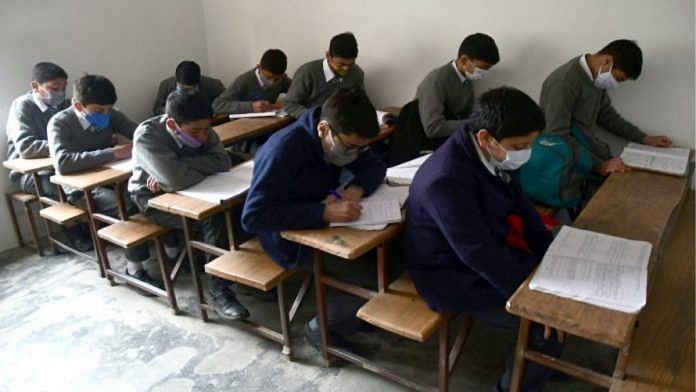Thank you dear subscribers, we are overwhelmed with your response.
Your Turn is a unique section from ThePrint featuring points of view from its subscribers. If you are a subscriber, have a point of view, please send it to us. If not, do subscribe here: https://theprint.in/subscribe/
Thorns of the Rosy National Education Policy
In the middle of the pandemic in 2020, the Government of India revised its National Education Policy. It introduced some sweeping changes for schools and higher education. Many experts hailed the policy as a necessary change. It seems to address the need to build a learning-centric system instead of an exam-centric system, which has stifled the creativity of all the students of India for many decades. The policy seems to touch upon all the key points: drop-out students, continuous assessment, tiered higher education, vocational training, and teaching standards.
While the policy seems to be visionary on paper, there is little specificity yet to truly reflect our expectations from the education system. On digging deeper, one can find some striking similarities in comparing the national policy on education as it was in 1992 with the new, updated policy in 2020. Both the policies, spaced 28 years apart, give an utterly unsubstantial document with vague egalitarian goals, and no clearly defined action plan for anyone in the bureaucracy or policy-making.
For instance, why do most academic institutions, at almost any level, lack basic facilities like toilets or drinking water, and how do you plan to change that now? This is defined as the most basic step on Page 40 of NEP2020 but is just stated as a blanket statement.
The most gaping aspect of this lack of clarity is related to the teachers. Teachers are the central nervous system of any education system. India not only has a severe shortage of teachers at all levels of education, but the ones who are in the system use outdated pedagogical techniques. Moreover, there is little incentive to remain updated with their subject matter or new developments in teaching standards across the world. Our students are being seriously short-changed by the lack of a dynamic teaching ecosystem.
This reality makes it imperative that the changes being introduced by the new NEP will require a serious training curriculum for teachers. The policy addresses this focus on teacher education in the most childish terms in items 15.1 and 15.2. It is merely stated that there is a need for training teachers in modern methods and that the incompetent teacher education institutions (TEIs) must be weeded out. But while stating this as a policy objective in 2020, it is fundamental to ask the question on why does the current regulatory framework fail to prevent existing TEIs from selling degrees and why do TEIs exist without even fulfilling the most rudimentary academic & infrastructural requirements.
It was astonishing to see that the wording of the points related to teacher education in this policy are similar to the proposal of 1986 (updated in 1992). They also identified the need for a teacher’s continuous improvement, and the need to phase out sub-standard training institutes for teachers. The authors of NEP2020 further plagiarized from their parent document in making claims to incorporate improved methods of recruiting, promotion, and incentivization that will follow a “merit”-based system. Again, no clear objectives, guidelines, or plans have been charted out in this lazy policy to define merit.
The most fundamental features of any educational system are not in place in India, like, teaching supplies, drinking water, teacher improvement, incentives for teachers, and uniformity of evaluation. In light of this, it is repulsive to see policy makers thump their chests on introducing a radical change on paper.
The lack of details in the policy document could have been foregone had it not been so evidently similar to a ~30-year old document. If this comparison of the 1992 and 2020 documents is any evidence, then this policy’s lofted goals are all we will get with no change in the ground-level reality. In this report, I have merely focused on the teacher-related aspects of the education system, but the similarities between the two generationally different documents are easy pickings. During my Ph.D., I learned that writing a concrete problem statement is the most difficult part of the research. Alas, the entire behemoth of the ministry of education for the central government of India seems to take that bit the most lightly.
Also read: SubscriberWrites: Need Indian ‘jugaad’ to come up with a cheap oxymeter
These pieces are being published as they have been received – they have not been edited/fact-checked by ThePrint.

